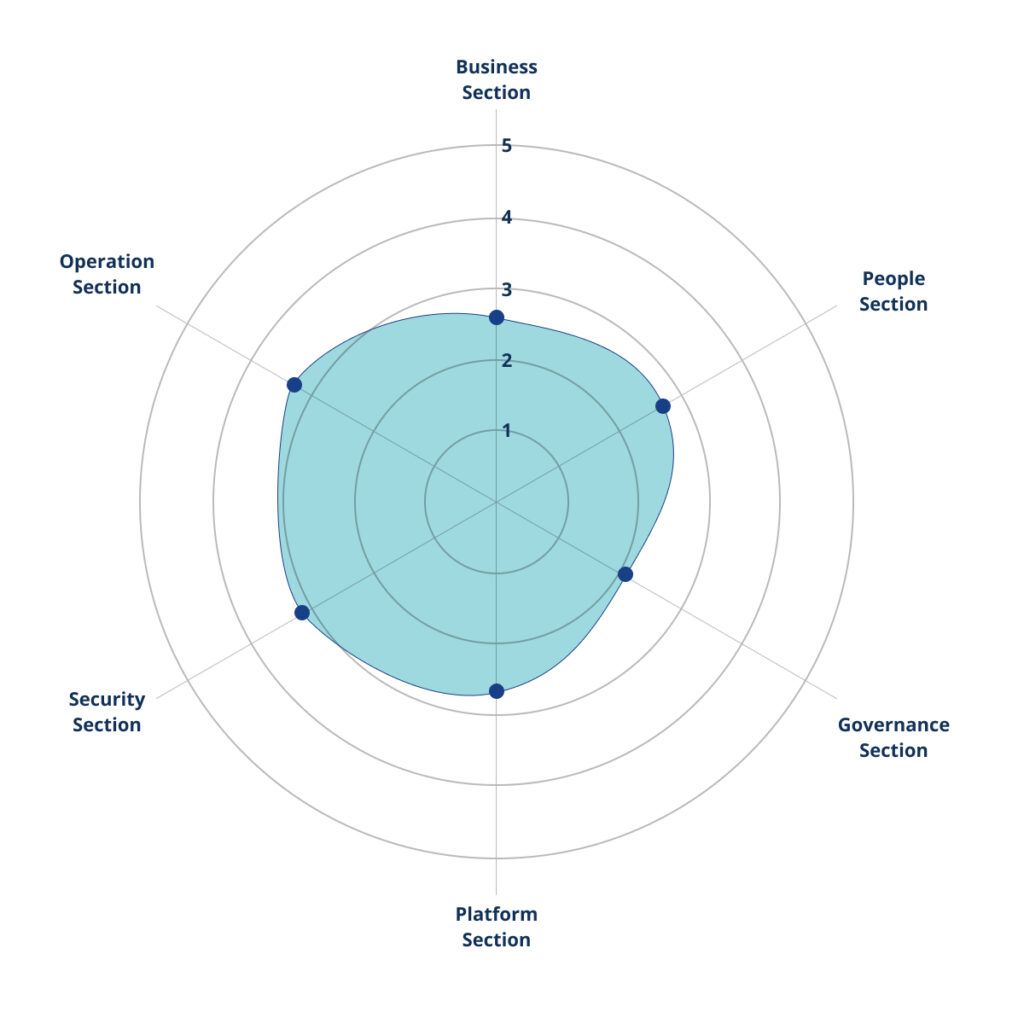How to Assess Cloud Adoption Maturity
Understanding the overall vision of cloud migration and the benefits it can bring to the business, as defined by the AWS Cloud Adoption Framework, is essential for planning the transition from traditional infrastructure. Each company has its own cloud adoption journey, so it’s important to assess its readiness. The AWS Cloud Readiness Assessment (CART) is a crucial tool for this process.
In the CART assessment, the organization’s current status across six perspectives, divided into a list of 47 items, is analyzed. Each item undergoes evaluation based on five distinct levels:
- No Awareness: Limited or no understanding of the subject matter.
- Early Consideration: Beginning to explore the topic and its implications.
- Pilot Testing: Initiating trial runs or experimental projects.
- Partial Implementation: The presence of initiatives, albeit with inconsistent deployment across the organization.
- Full Integration: Complete and consistent implementation throughout the organization.
Cloud adoption maturity: Overview of the journey
Realizing what the expected benefits are for the business according to the AWS Cloud Adoption Framework, we need to understand at what stage the company is to plan a course of action. After all, each cloud transformation is unique.
An example of an item in the CART from a business perspective is whether the company is using the cloud to develop new processes, products, and experiences, and improve existing ones. It may seem like a simple question, but often when we inquire about the motivation for migrating to the cloud, many companies do not have a direct answer to this.
Knowing what the expected benefits for the business are according to the AWS Cloud Adoption Framework, we need to understand what stage the company is at in order to draw up an action plan.
Another question, now from the security perspective, is whether the company is monitoring, evaluating, managing, and improving the efficiency of security and privacy programs. As previously mentioned, the fact that a company has migrated its systems to the cloud does not necessarily indicate an advanced level of usage. Many still don’t have a security and privacy program implemented, and planning through CART will support this journey.
Another vital aspect is to enlist an experienced and qualified professional to accurately address CART’s inquiries. Often, companies complete the checklist without possessing comprehensive knowledge of the expectations for each item. Trained professionals familiar with responding to CART items have already gained experience through various migrations and can assist in providing the most precise answers by benchmarking with other migrations they’ve been involved in.
At the end, the organization will have a report depicting its current state related to cloud adoption, identifying areas of highest maturity and those in need of further development.

Using the heat map, it’s possible to discern the company’s priorities and devise an action plan for advancing across the 6 perspectives, thereby enabling a more successful cloud adoption journey.
If you’d like to understand your cloud adoption maturity, feel free to reach out to our team of specialists to plan a Cloud Readiness Assessment.
LET'S CONNECT
Ready to unlock your team's potential?

e-Core
We combine global expertise with emerging technologies to help companies like yours create innovative digital products, modernize technology platforms, and improve efficiency in digital operations.







